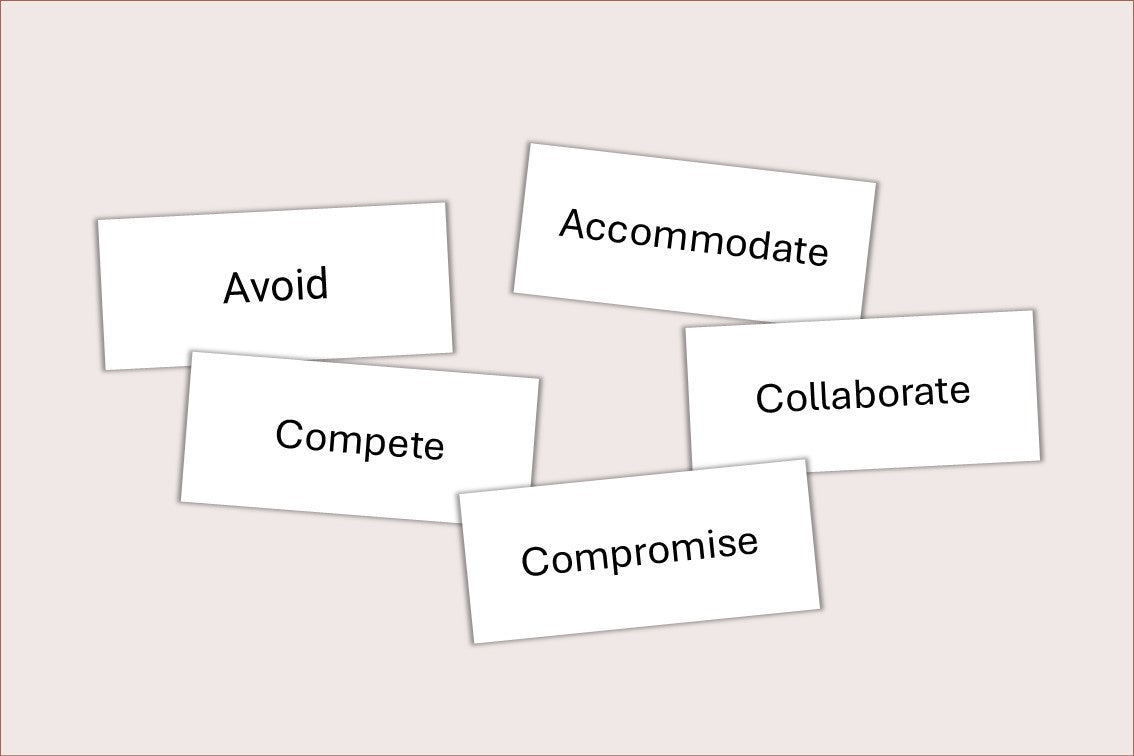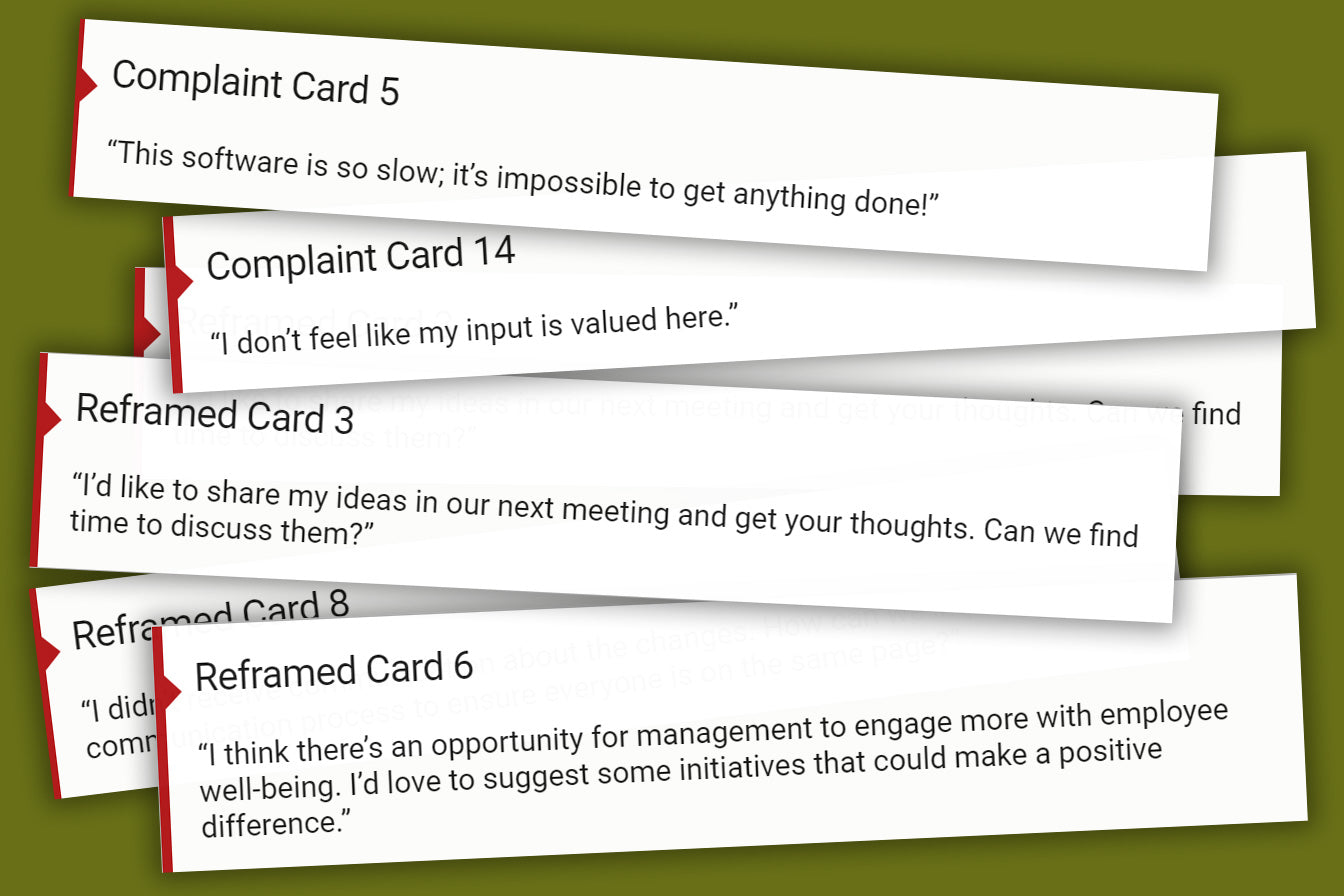Many trainers are always in search of the next best exercise for their courses. On this site alone we have hundreds of exercises that you could choose from. You may even decide to design your own; but a primary question is what makes an exercise effective.
Today, you can browse the net to find inspiration for your own design or use exercise “recipes”. New websites seem to be popping up all the time offering ever more corporate training exercises. The problem is that, more often than not, most of these exercises are terrible! Sometimes, you wonder if the author has ever ran the exercise once before offering it to the general public.
A great way to learn how to choose or design good exercises is to know what makes a bad or ineffective exercise.
In this article, four exercises are examined where each represents a class of similar poor exercises. Each exercise is then analysed so you can see the problems and how to address them.
Examples of Bad Exercises
As each poor exercise is presented, pause and think what is wrong. Next, proceed to read through the analysis to learn more. If you have identified something that is not mentioned, please use the comments section below to let the other readers know what you think. We can all learn from each other on how to avoid designing and running bad exercises.
Each exercise is presented in a concise way by focusing on its main parts so that the article stays to the point. Note that, it is assumed that the exercises are targeting adults.
Example A: Exercise on Evaluating Management Challenges
Fancy Name: Rope Management
Instructor:
In this exercise, we want to explore agile management concepts. First, I am going to lay a rope on the floor. Given the project you are all going through, we will be examining several aspects of it.
- I am going to mention one aspect at a time, and depending on the difficulty of the task, I want you to stand at an appropriate location along the length of the rope on the floor.
- For example, if the aspect I mentioned is very challenging, I want you to stand on this end, and if it is not challenging at all, I want you to stand on the other end. Consider the rope as a spectrum, so if you think it is half-challenging, stand in the middle of the rope and so on.
- Ok, let’s start. Consider aspect X. Now move to position based on how challenging you think it is…
What is wrong with this exercise?
Analysis for Example A
This exercise sounds elaborate. With props like a rope it feels like it is going to be fun. But does it deliver?
Exercise Issues:
- This exercise has a simple task of scoring the difficulty levels of a specific aspect of a project. This could easily be done by asking team members to score it from 1 to 5 or similar. The approach presented in this exercise is time consuming and unnecessary.
- It is childish. Imagine if you have stakeholders, managers, senior technical members, say aged 60 and above, who have been involved in many grand projects before. You want these people to go and stand on one end of a rope to indicate how difficult they think an aspect of a project is, for example, how challenging it is to deploy the solar panels of a Mars rover if 80% of the battery charge is lost. It is too simplistic and distracting.
- Just because you throw a rope in there and make delegates walk around, doesn’t turn your course into one that has experiential learning. Standing next to a rope doesn’t make it any easier to estimate how challenging something is, nor is it a skill that helps delegates address issues in the projects. Sure, the rope trick may make the exercise more memorable, but that’s not what we are after here!
Example B: Exercise on Managing Envy
Fancy Name: Envy Cards
Instructor:
In this exercise we want to help you avoid envy. Being envious of others can stop you from focusing on your own life so this exercise will help you get rid of your envy.
- I am going to distribute blank cards to everyone.
- I want you to spend a few minutes and write what you are envious about on each card.
- When the time is up, I want you to come back and share what you have written with the group.
- Now that you have created your “Envy Cards”, I want you to fold them as small as you can and then throw them in the bin. They are gone! This symbolises that you have gotten rid of your envy!
What is wrong with this exercise?
Analysis for Example B
This exercise sounds promising until you realise, after a while, that it is not doing anything.
Exercise Issues:
- Binning an idea is certainly symbolic and theatrical, but honestly, do you really think that your strong sense of envy will disappear by a mere act of binning it?
- Getting delegates to share their feeling and inner thoughts is generally helpful, but only in a supportive environment. The moment people feel they might be judged, they start censoring themselves and stop sharing things that might make them look bad. Most often, the censored idea is exactly what needs to be addressed, and if they censor it, you will lose a great opportunity.
- Exercises and emotional content need to be preceded with warm up steps so that delegates become more comfortable and come into the zone. If you suddenly ask someone, “What are you most envious of?”, they may just respond by mentioning something that is stereotypically considered envy, rather than what they are truly envious of. For example, they might tell you they are envious of some rich guy who lives in the centre of an expensive capital, while in reality, they are much more preoccupied envying their childhood friend who married a nice woman.
- Just because you have a bunch of cards in the exercise for delegates to write something on, it doesn’t make it any more interesting or useful.
Example C: Exercise on Marketing and Selling
Fancy Name: Sell a Mystery Object
Instructor:
I have a box here with a number of objects in my house and I brought them over for this exercise:
- I want you each to pick up one object from the box. You can also use any other products or objects you see in this room.
- Pair up with a partner.
- Devise a marketing plan for the object you have chosen.
- Market and sell it to the other person.
- Reflect on your selling performance.
Analysis for Example C
This exercise follows a popular pattern of exercises. Many such exercises claim to be great for team building, sales skills, marketing, reflective learning among others. Unfortunately, they offer very little.
Exercise Issues:
- This is basically a “discussion exercise” which helps the delegates discuss a topic in a structured way. You should know from the outset that this is not going to improve any particular skill, and at most, could lead to some insights on a given topic.
- Asking people to pick up a product and sell it might sound like an interesting exercise, but in reality, is no more than saying could you please sit down and write an essay, on any topic. There is nothing special about this exercise; it is neither structured, nor that effective, nor imaginative, nor frankly that interesting. If you want them to exercise selling, you must ‘focus’ the exercise and narrow it down: specific products, specific style of selling, specific target market, specific environment, specific steps, and so on.
- Some exercise designers like to throw everything in; it is as if they score a point for each keyword mentioned! A marketing plan in this exercise is a whole different ball game than selling and so just throwing marketing into it doesn’t make the exercise any more in-depth or more effective.
- An exercise designed for a course must include more than self-assessment. Encouraging self-assessment is good, but is not enough. There must be coaching, and a feedback mechanism that helps delegates correct and improve their behaviour to get better results.
Example D: Exercise on Conflict Management
Fancy Name: Push/Pull Activity
Instructor:
In this exercise I am going to explain how you can manage conflicts through the symbolic gesture of pushing and pulling.
- Find a partner and pair up.
- Decide who goes first. All nominees, please stay in the class; everyone else please stay outside while I brief the rest.
- To the nominees: there are two stages.
- Stage 1:
- They should push the other person towards the back end of the class without any explanation.
- They should expect resistance because it is human nature to resist this push.
- Stage 2:
- They should gently ask and persuade the partner to accompany them to the back of the class.
- Everybody outside, come back, pair up with your partners and let’s start.
- Once the pushing and pulling is over, let’s get back together. What happened? I am going to highlight that Stage 1 pushing didn’t work as there was natural resistance, but Stage 2 pulling and persuading was much more effective and so you should focus on that when resolving conflicts with others.
What is wrong with this exercise?
Analysis for Example D
This exercise is so poor one wonders where to start! There are many elaborate physical training exercises out there especially when teaching soft skills and management, but just because they are physical doesn’t make them effective or useful. In fact, some can be quite off putting or even dangerous. Let’s review the issues:
Exercise Issues:
- Physically pushing someone when they are not sure what you are trying to do can be confusing or even threatening.
- What is achieved with pushing is hardly surprising. It is basically a poetic demonstration of, “You should not push people around”. Do people really need such a demonstration to learn why bullying and pushing around is not acceptable? We are dealing with adults here! This exercise will not transform a bully into a gentle persuasive communicator who only uses reason to convince others!
- This exercise doesn’t lead to a tangible skill. It doesn’t improve your communication or negotiations skills. It is an awareness exercise. Now, the question is, does this exercise lead to an improved awareness of not pushing people around? In the heat of the moment when getting bullied, while the brain’s amygdala is firing and taking over, would people suddenly remember the pull/push exercise and instantly change their behaviour to keep themselves on check! It is highly unlikely! To raise awareness, it is better to focus on case studies and examples related to participants’ specific environment so they can relate to it and use such examples as an analogy.
How to Design Training Exercises
Having gone through the four examples, let’s summarise the lessons learned. When choosing or designing exercises, consider the following guidelines:
Avoid Childish Setups
- Don’t move delegates around for no reason. If you want them to move or to change the pace of the course then make sure the moving is for a good reason. Otherwise you can just give them a bio break.
Use Warm Up Steps
- Prepare delegates with warm up exercises before asking them to participate in deep emotional and psychological concepts. This is necessary so delegates feel they are in a supportive non-judgemental environment.
Avoid Poor Experiential Learning Tasks
- Just because you make delegates move, doesn’t make the course experiential. There is much more to it, namely that they need to master a useful skill through observation, conceptualisation and active experimentation. See how to apply experiential learning for a comprehensive guide.
Avoid Symbolic and Forgettable Activities
- Your main aim in a training course is to help students transfer skills and knowledge into long term memory. A symbolic gesture, such as binning an idea written on a card, that is forgotten in a few days is not training. Use it as an energiser, if that’s what you need in your course. We have an example exercise which is best only for energising or a warm up, nothing more. Don’t be under the illusion that delegates will actually learn from this exercise and will demonstrate some profound permanent behaviour changes!
Avoid Using Discussion Exercises as a Substitute to Develop Skills
- The aim of a discussion exercises is for delegates to share their ideas about how they approach something. Don’t confuse it with skill building exercises where delegates need to repeatedly go through a task with a feedback loop present that can help them become better at it.
Push Them Beyond Their Current Skill Level
- Just asking students to do an exercise and then reflect on it is very generic. Often, such exercises are not hard to imagine and people would naturally do them anyway. We all sell things and concepts every now and then for everyday living, but this doesn’t turn us into a top salesperson. You would need a more systematic exercise along with feedback and coaching.
Beware of Unsuitable Physical Exercises
- Many exercises that include a physical element, especially with body contact, can be unsuitable for a professional environment of a business course for adults. You need to think carefully before you subject adults to such exercises. It is well-known in the training industry that many delegates who experience such poor exercises are totally put off by them. Once experienced, they are more likely to say that the whole course was a waste of time, just because they had gone through an awkward and often useless exercise such as the one presented in the example. Poor rating would then follow.
Search for Alternative Simpler Approaches to Deliver the Same Results
- Don’t get adults to go through an elaborate 15-min exercise if you can communicate the concept in one sentence with the same results.
Keep the Exercise Focused
- A good exercise must be focused on teaching a single skill well. Including many topics, keeping the exercise generic and mixing multiple fields can confuse the delegates. It is also difficult to design an effective feedback loop for skill improvement when an exercise is not focused and contain a variety of areas. Chunk it down; use several exercises where each exercise focuses on a single skill. Get the delegates to go through each exercise multiple times to become better at that skill.
If you have examples of poor exercises you have experienced before, please share them below along with your analysis of why they are poor. We would love to hear about your experience and see what the training community can offer on this topic.
Soft Skills Training Materials
Get downloadable training materials
Online Train the Trainer Course:
Core Skills
Learn How to Become the Best Trainer in Your Field
All Tags
Training Resources for You

Course Design Strategy
Available as paperback and ebook

Free Training Resources
Download a free comprehensive training package including training guidelines, soft skills training activities, assessment forms and useful training resources that you can use to enhance your courses.

Our Comprehensive Guide to Body Language

Train the Trainer Resources
Get Insights - Read Guides and Books - Attend Courses
Training Materials
Get downloadable training materials on: Management Training, Personal Development, Interpersonal Development, Human Resources, and Sales & Marketing














Leave a comment
All comments are moderated before being published.
This site is protected by hCaptcha and the hCaptcha Privacy Policy and Terms of Service apply.